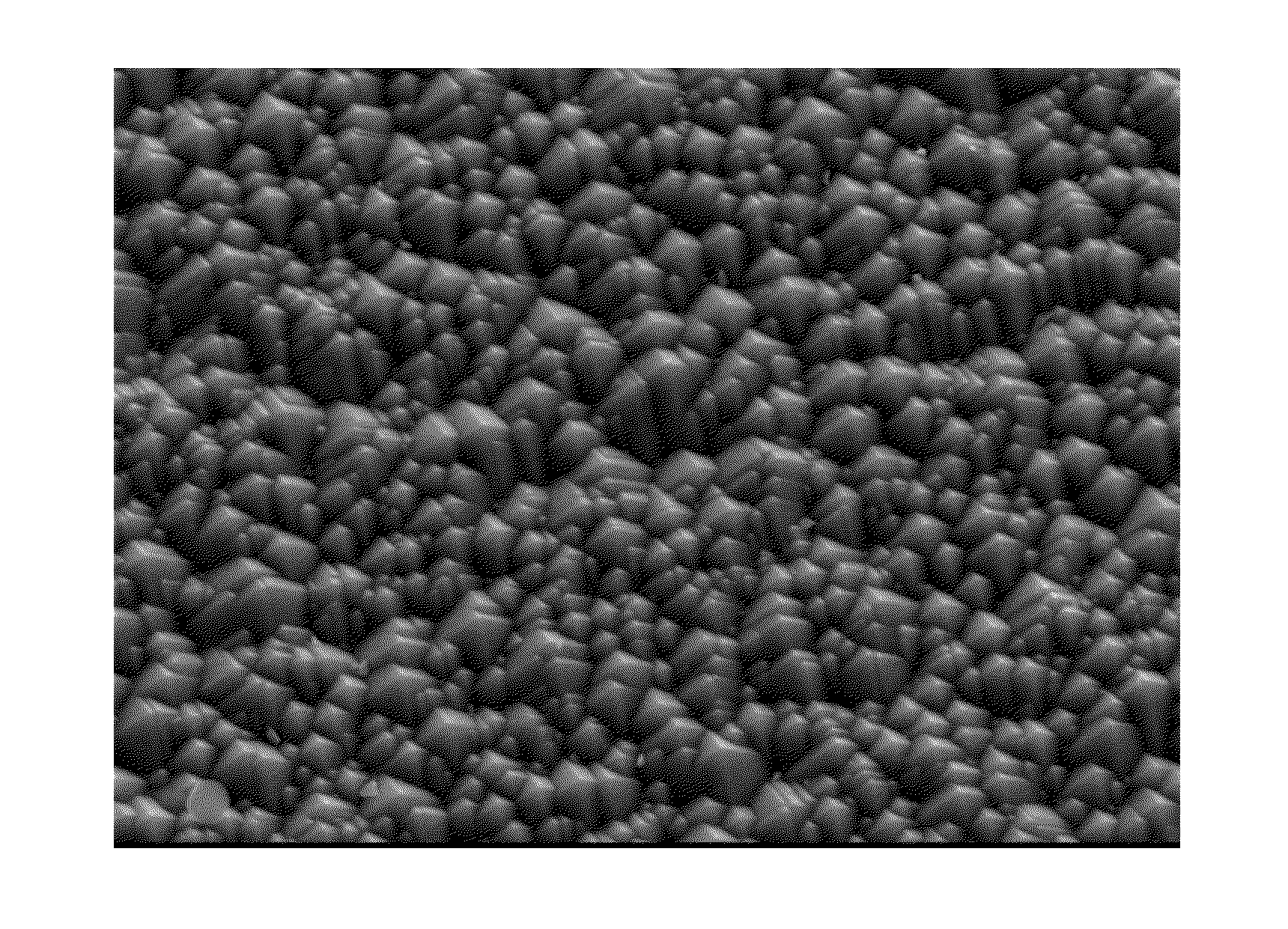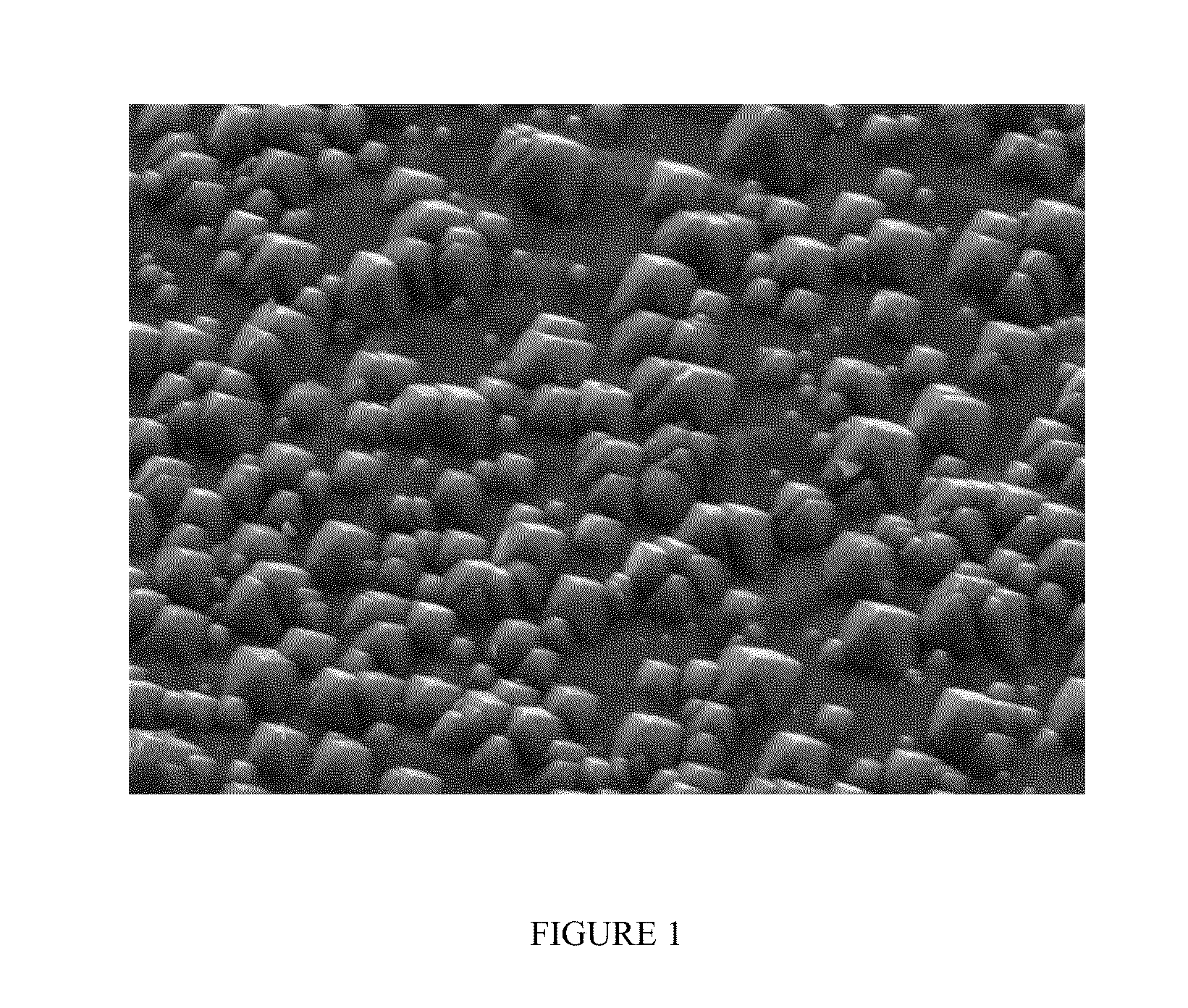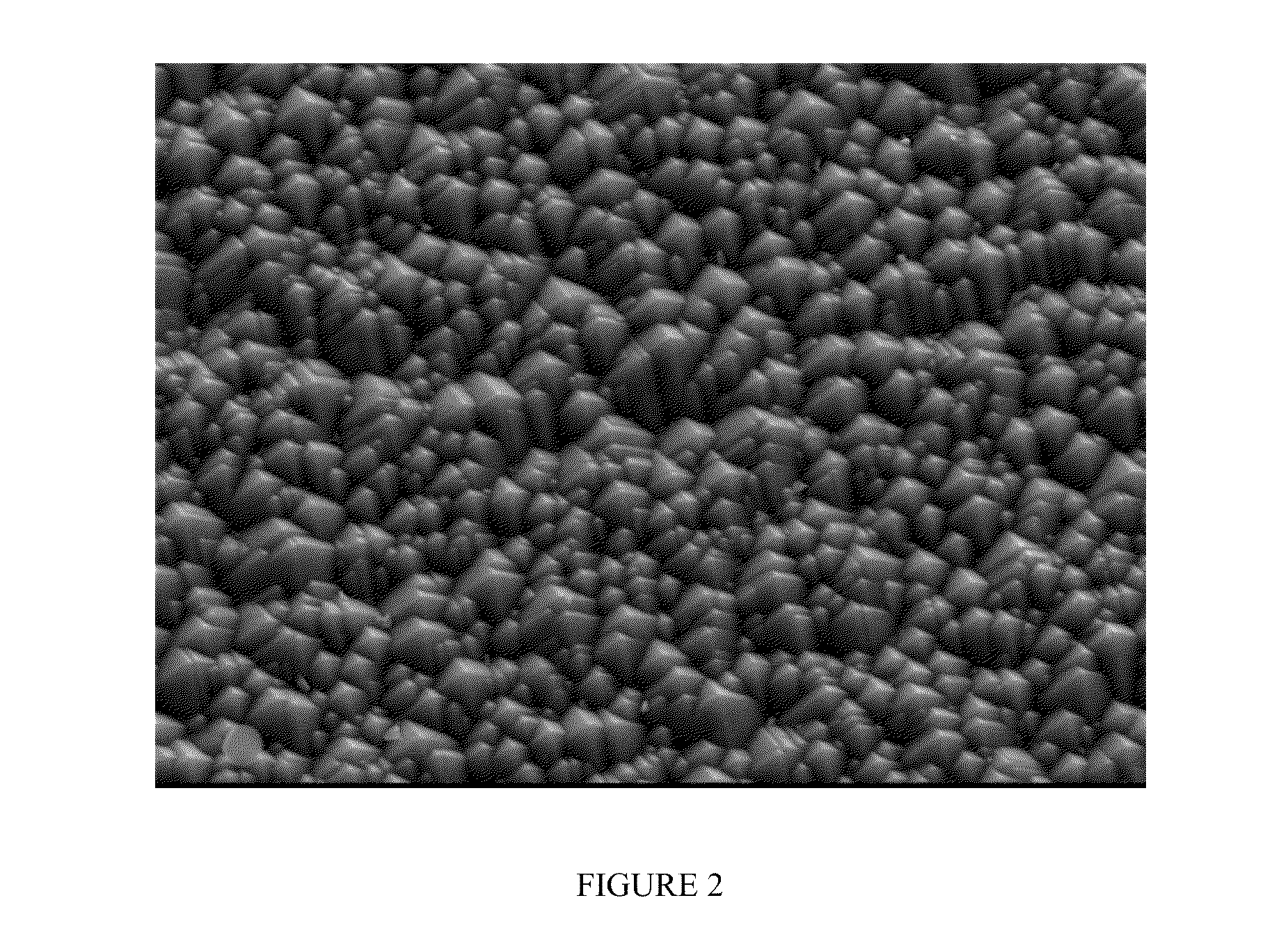Texturing of monocrystalline semiconductor substrates to reduce incident light reflectance
a monocrystalline semiconductor and incident light reflectance technology, applied in the field of texturing monocrystalline semiconductor substrates, can solve the problems of high reflectivity, unsatisfactory low boiling point and low flash point, toxicity to workers, etc., to reduce the formation of flat areas, improve the efficiency of devices, and increase the effect of incident light absorption
- Summary
- Abstract
- Description
- Claims
- Application Information
AI Technical Summary
Benefits of technology
Problems solved by technology
Method used
Image
Examples
example 1
[0061]Two doped monocrystalline silicon semiconductor wafers (obtained from SolarGiga) having n+ doped zones on the front side or emitter layer and a pn-junction below the emitter layer were textured with one of the two texturing solutions shown in Table 1.
[0062]
TABLE 1ComponentSolution 1Solution 2Tripropylene glycol12 wt %2 wt %Potassium hydroxide6 wt % (25 g / L)6 wt % (25 g / L)1,4-butanediol22 wt %2 wt %N-isopropylhydroxylamine30.1 wt % 0.1 wt % Hydantoin400.05 wt % WaterBalanceBalance1weight average molecular weight = 192 g / mole, flash point = 140.5° C., Boiling point = 268° C.;2Flash point = 121° C.;3Hydroguard ™ I-15 (available from The Dow Chemical Company, Midland, MI);4melting point = 221-223° C. (Decomposes).
[0063]Each wafer was immersed in one of the two texturing solutions for 10 minutes. The solutions were kept at 80° C. and the pH of the solutions was at 13 measured with a conventional laboratory pH meter.
[0064]FIG. 1 is a SEM of the wafer textured with solution 1 take...
examples 2-5
Controls
[0065]Four aqueous based texturing solutions were made as shown in Table 2 below. Four monocrystalline silicon semiconductor wafers (obtained from SolarGiga) having n+ doped zones on the front side or emitter layer and a pn-junction below the emitter layer were weighed using a conventional laboratory balance. Each wafer was then immersed in one of the four texturing solutions for 30 minutes at 75° C. The pH of the texturing solutions was 13. The wafers were then removed from their respective texturing solutions, rinsed with water and air dried. Each wafer was then weighed and the amount of silicon etched per side was determined as shown in Table 2 below.
[0066]Reflectance of the textured surface was determined using a MacBeth Coloreye Reflectometer 7000 at the wavelength of 600 nm The source of the incident light was a pulsed xenon bulb. An average of 6 reflectance readings was taken across the surface of each wafer. The average reflectance is shown in Table 2.
[0067]
TABLE 2AD...
examples 6-7
Controls
[0069]Two aqueous based texturing solutions were made as shown in Table 3 below. Two monocrystalline silicon semiconductor wafers (obtained from SolarGiga) having n+ doped zones on the front side or emitter layer and a pn-junctions below the emitter layer were weighed using a conventional laboratory balance. Each wafer was then immersed in one of the two texturing solutions for 30 minutes at 75° C. The wafers were then removed from their respective texturing solutions, rinsed with water and air dried. Each wafer was then weighed and the amount of silicon etched per side was determined as shown in Table 3 below.
[0070]Reflectance of the textured surface was determined using the MacBeth Coloreye Reflectometer 7000 at the wavelength of 600 nm. An average of 6 reflectance readings was taken across the surface of each wafer. The average reflectance is shown in Table 3.
[0071]
TABLE 3ADDITIVESODIUM(ExamplesHYDROXIDEADDITIVETIMETEMPERATUREETCH / SIDEREFLECTANCE6-7)(g / L)(wt %)(minutes)(°...
PUM
| Property | Measurement | Unit |
|---|---|---|
| boiling point | aaaaa | aaaaa |
| angle | aaaaa | aaaaa |
| melting points | aaaaa | aaaaa |
Abstract
Description
Claims
Application Information
 Login to view more
Login to view more - R&D Engineer
- R&D Manager
- IP Professional
- Industry Leading Data Capabilities
- Powerful AI technology
- Patent DNA Extraction
Browse by: Latest US Patents, China's latest patents, Technical Efficacy Thesaurus, Application Domain, Technology Topic.
© 2024 PatSnap. All rights reserved.Legal|Privacy policy|Modern Slavery Act Transparency Statement|Sitemap



